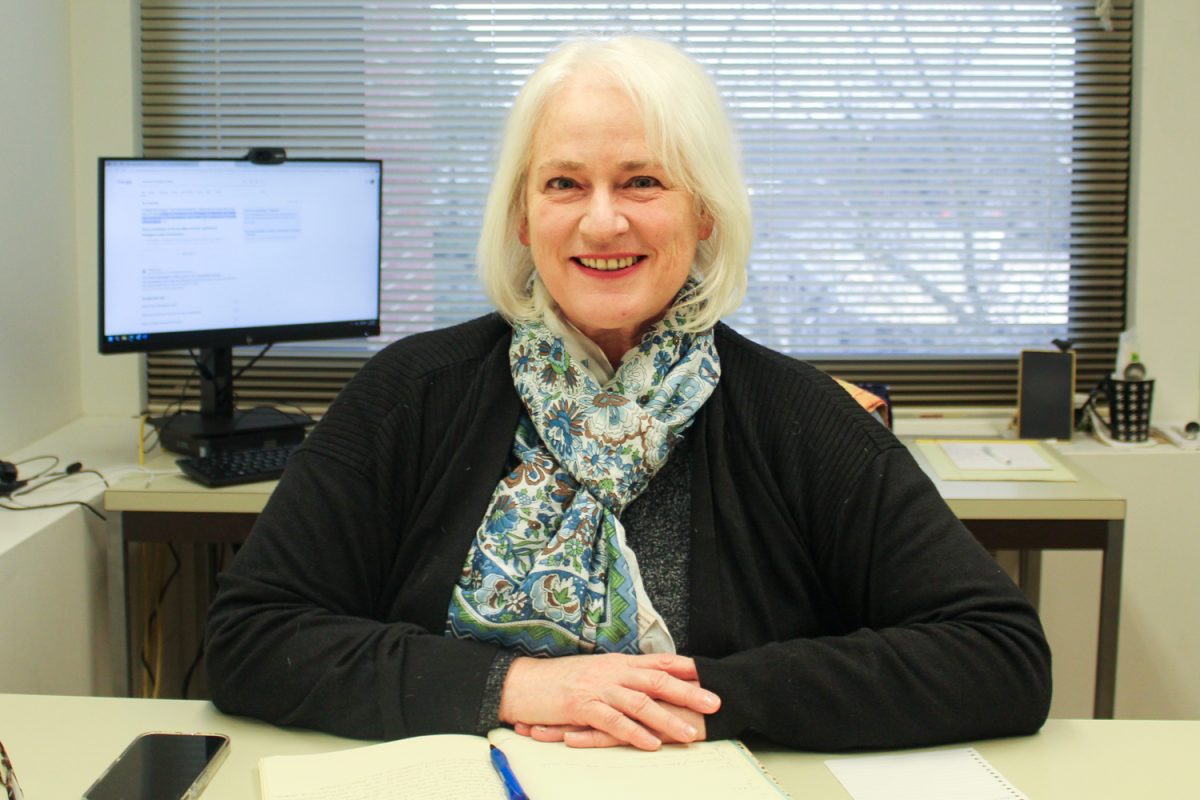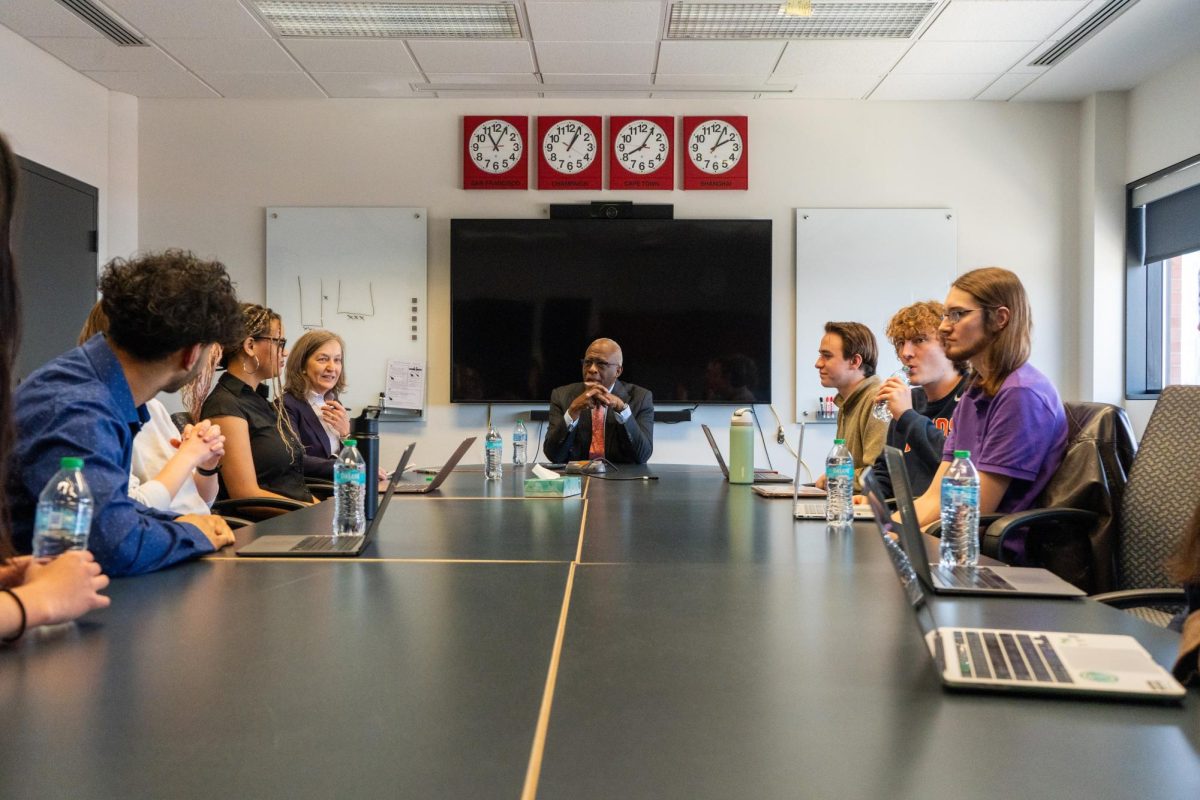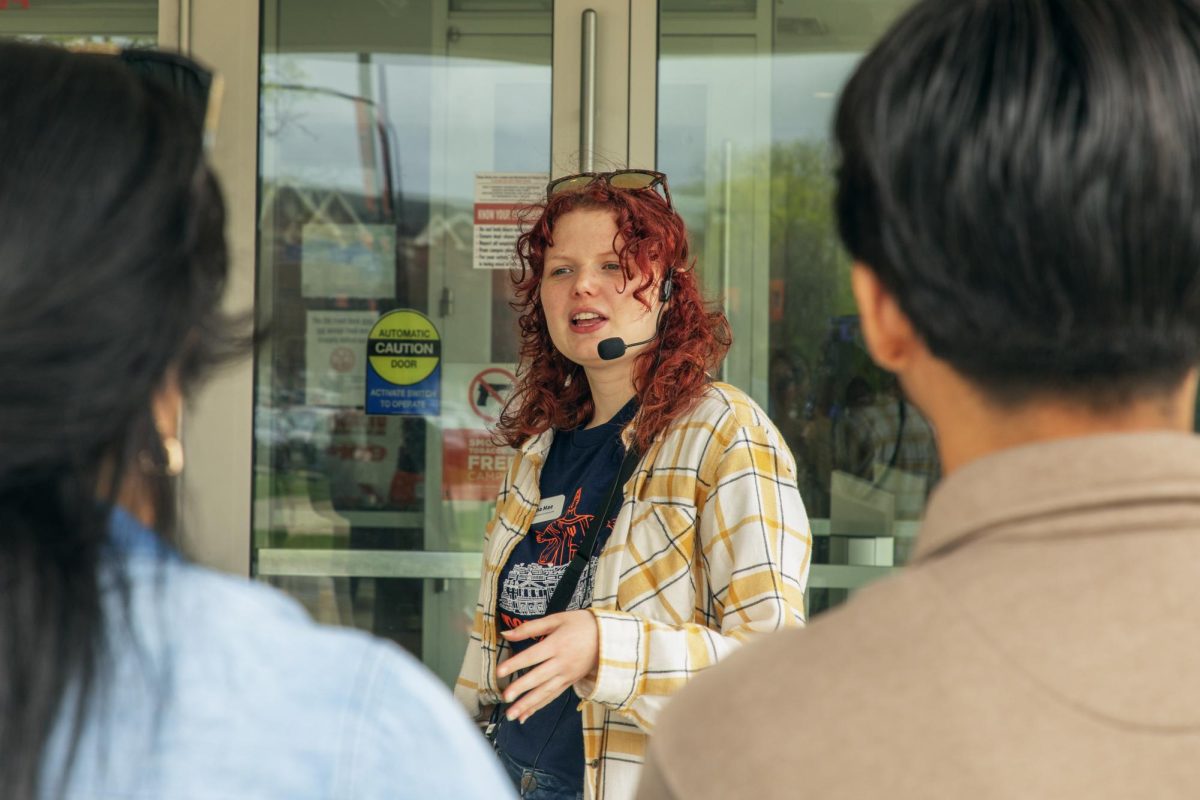When asked about professor Ann Abbott, her colleagues and students smile.
“I can’t even figure out where to start,” said Brady Hughes, an academic adviser and colleague in the Department of Spanish and Portuguese. “She is such a compassionate, knowledgeable person to work with.”
As a professor, Abbott has made a mark on campus by teaching Spanish not just as a language, but as a lifeline, a bridge and an act of social justice.
“I feel like it can be such transformative learning,” Abbott said on learning Spanish. “It changed my life. It opened up the world to me.”
Abbott is the kind of professor students feel an impact from, the kind they say changed everything. She is also someone who, after 20 years of teaching at the University, remains fiercely committed to reinvention.
Get The Daily Illini in your inbox!
SPAN 232: Spanish in the Community is Abbott’s passion project turned into reality. The course has grown from 12 students and one community partner to a program that immerses 90 students a semester in service learning.
As part of the class, students translate at refugee centers, tutor children of immigrants and help non-English speakers with interpretation.
Abbott pitched the class in 2004, after a call for proposals from what was then the University’s vice chancellor for public engagement to create service learning courses.
SPAN 232 is historic, as the first course on campus to be approved as a general education requirement taught in a language other than English.
The concept was simple: Students would not just learn Spanish but actively use it for a noble cause.
“You take that course and get to know the local immigrant community through your volunteer work,” Abbott said about the class’s premise. “Learning the facts about immigration and learning about our local immigrant community.”
Abbott doesn’t just teach; she advocates. According to her colleague Florencia Henshaw, director of advanced Spanish, she has cultivated an environment of reflection and growth.
“Professor Abbott has a very empathetic way of relating to people that I deeply admire,” Henshaw said. “She has a way of asking the right questions, of listening, of allowing you to explore, to learn from your own steps.”
Abbott’s passion for teaching is evident in the way students talk about her. Her dedication goes beyond the classroom, shaping the lives of those she mentors.
Flor Quiroz, a senior in LAS and a former student of and teaching assistant for Abbott, credits her with profoundly influencing her academic journey.
“The experience in (SPAN 232) is exceptional,” Quiroz said. “It changed a lot of my trajectory and what I wanted to study and my approach to my career, because I’m a Latina and I want to do clinical psychology and it really helped me understand my place in that.”
Being able to connect with students and support them through challenges, Abbott has left a lasting impression. Yaxeny Muñoz, junior in Social Work and former student of Abbott’s, praised her unwavering dedication, even in the face of personal hardships, such as a bike injury.
“Even though (Abbott) was recovering from the accident and she was going through such a hard loss, she still did everything to teach the class and give it her all every single time,” Muñoz said.
Muñoz, who is currently studying abroad, considers Abbott a role model and a source of inspiration, highlighting the professor’s profound influence even from a distance.
But Abbott’s commitment extends beyond her students. She has worked with the refugee center, local schools and advocacy groups across Champaign-Urbana, a town so known for its University population that people do not often talk about its immigrant communities.
Through her work, Abbott inspires others to challenge their beliefs. She recalled a moment from class when a student reflected on immigration through a religious lens.
“One of my students, in her reflection, wrote ‘I’m a Christian. I had no idea that I could think about immigration through this lens,’ and to me that is so important,” Abbott said. “Because it’s not just teaching you the facts about immigration, which I do, or about our local immigrant community — I want you to open your mind in new ways to the topic of immigration and ask why we think about immigration in only one way when we don’t have to.”
It is a strange time to be doing this work, Abbott admitted. There is a tangible fear about what can and cannot be taught, and how quickly a lifetime of work can be politicized into something dangerous.
“It’s a little bit scary to be in this environment, but that’s nothing compared to the fear that our local immigrants feel right now,” Abbott said.
Yet, Abbott continues teaching and advocating for Spanish-speaking communities, not just within the classroom but far beyond it. She also ensures that her students experience the rich diversity within Spanish-speaking communities, often highlighting overlooked voices and histories.
Verenise Morales-Saavedra, a sophomore in Business and current teaching assistant for SPAN 232, has witnessed firsthand the behind-the-scenes effort that goes into this work.
“She takes a lot of time in class to focus on the groups that don’t come to mind when you think of Spanish-speaking communities,” Morales-Saavedra said. “We had a whole unit about Q’anjob’al, a dialect spoken locally and mostly found in Mexico and Guatemala. So I think I learned a lot about these groups.”
Through her work, Abbott enriches the diverse C-U community, focusing on what makes it so special.
“(You want) to have someone who can be right there, not only to challenge you and inspire you, but also to cheer you on,” Henshaw said about Abbott. “Someone who wants to know what you want to work on, and then to encourage you to go for it. And for that, definitely the first name that comes to mind is (Abbott).”






